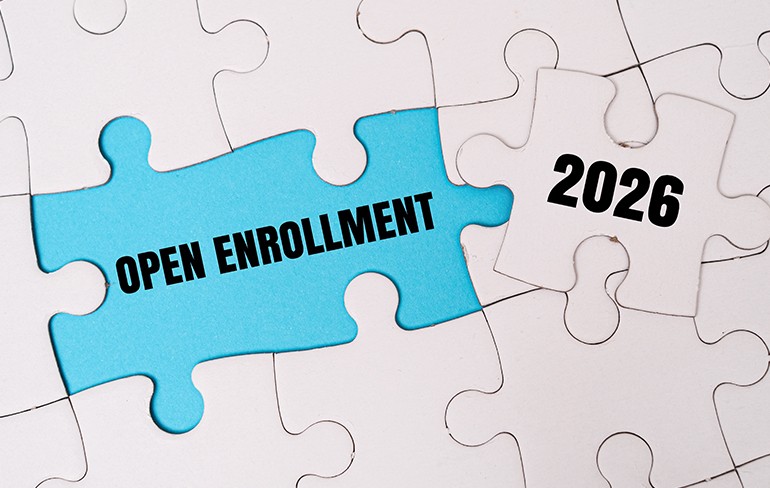Healthcare.gov defines a domestic partnership as "two people of the same or opposite sex who live together and share a domestic life but aren't married or joined by a civil union." It is becoming increasingly common for states to recognize domestic partnerships, but there is no one true definition across all states. Some states recognize domestic partnerships and treat them similarly to a marriage, and some don't. If your state does recognize domestic partnerships, many employers will include domestic partners in their medical plans since it doesn't typically cost anything additional. If a medical plan covers domestic partners, it will work the same as if the couple is married and usually covers children.
 Employees will have to complete a form for their health insurance administrator or employee benefits plan administrator. These forms help verify that the couple meets certain criteria.
Employees will have to complete a form for their health insurance administrator or employee benefits plan administrator. These forms help verify that the couple meets certain criteria.
Generally, the following requirements must be met for a domestic partner to qualify for health coverage purposes under federal law:
- The participant and domestic partner share a common residence for the calendar year
- The domestic partner must be a member of the participant's household for the calendar year
- During the calendar year, the participant must provide more than half of the domestic partner's support
- The domestic partner must not be the participant's (or anyone else's) qualifying child under Internal Revenue Code Section 152(c)
- The domestic partner must be a U.S. citizen, U.S. national, or resident of the U.S., Canada, or Mexico
Can a participant be reimbursed for medical expenses of the domestic partner's children under a Health FSA? Yes, if the child is considered a "qualifying child" of the participant.
 A "Qualifying Child":
A "Qualifying Child":
- Is a child (including natural, adopted, foster, and/or stepchild), descendent of such person (i.e., grand and great-grandchildren, nieces or nephews, including step nieces and nephews), or a brother/sister (including step)
- Lives in the same place as the employee for more than half of the year
- Is under 19 years old at the end of the year, or, if a full-time student, under the age of 24 at the end of the year, or is disabled
- Does not provide more than half of their own support
It is possible that if an individual is a stepparent of their domestic partner's child under state law, then the individual will also be the child's stepparent for federal income tax purposes. Children of domestic partners who qualify as employees' stepchildren under state law (and are under age 27 as of the end of the taxable year) would be entitled to receive tax-free health coverage under Code Section 105(b) and Treasury Regulations Section.106-1.
If you and your partner are looking into enrolling for domestic partner benefits, here are a few things to consider:
- Do your research on whether your state and insurance provider recognizes domestic partnerships
- If your employer does not provide coverage for domestic partners, there are alternatives to extend that coverage via insurance exchanges or private insurance companies
- Have the proper documentation ready to prove your domestic partnership
- Documentation needed may include:
- Rental lease, deed, or mortgage with both names on it
- Joint bank account or credit card accounts
- Drivers' licenses with matching addresses
- Shared title for a vehicle or other property
- Life insurance policy, retirement benefits, or a will where you are each other's primary beneficiary
- Assignment of power of attorney
- Speak to your HR representative to see your employer's specific qualifications
- Documentation needed may include:
- Explore your options - Your partner's insurance or private insurance may be a better option for the both of you
- Since domestic partners are not recognized under federal law, there are no tax protections like with married couples, and they cannot be listed as tax dependents
Regulations continue to change on domestic partnerships and vary from state to state, so always speak to your plan administrator or attorney to ensure you make the best decision for yourself and your loved ones and understand what your benefits entail.
Resources:
Larry Grudzien, Attorney at Law.





